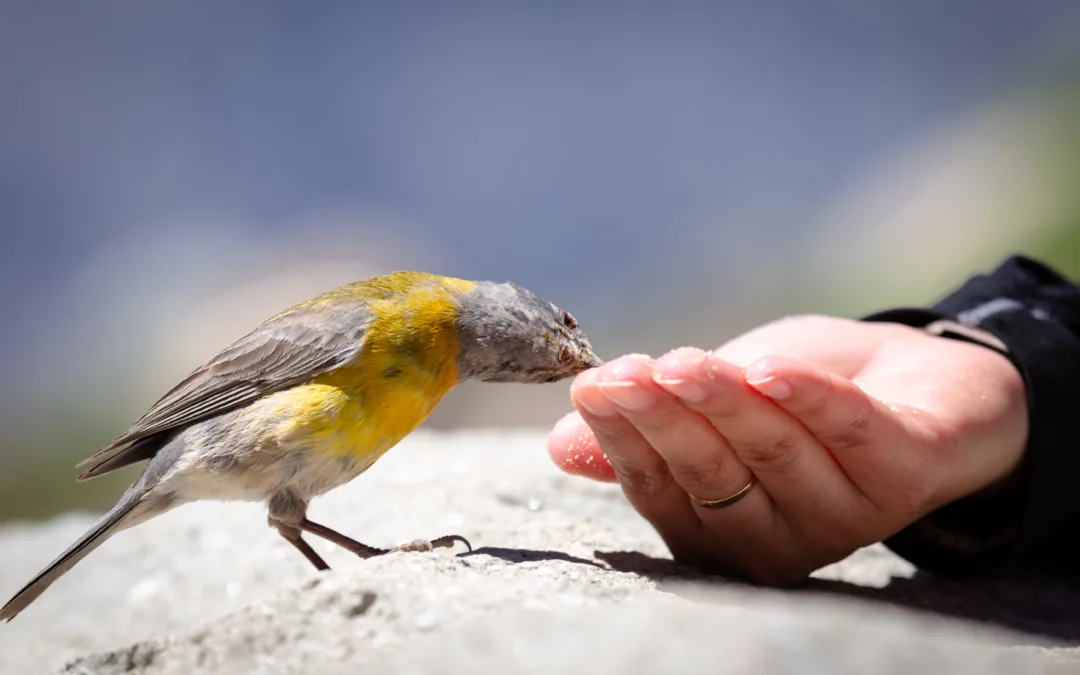Introduction
Birds, nature’s aerial dancers, often capture our attention through their vivid plumage and melodic songs. But what do baby birds eat, and more importantly, how can we, as nature enthusiasts and wildlife caregivers, ensure their wellbeing during the critical junctures of development?
Understanding and catering to the needs of baby birds is not merely an act of humane stewardship but a vital component of their survival in the wild. This guide will walk you through the intricate art of nourishing our youngest feathered friends, from understanding what baby birds eat at different stages to providing the right food for hatchlings, nestlings, and fledglings.
By knowing what baby birds eat, you can help ensure they receive the proper nutrition needed for growth and development. Whether you find a baby bird in need or are simply curious about their diet, this guide will provide you with the essential information to support their journey from hatchling to fledgling.
What to Feed Baby Birds

What Do Baby Birds Eat During the Hatchling Stage?
Hatchlings are featherless, with closed eyes, and entirely dependent on their parents or caretakers for sustenance. At this early stage, their diet consists of soft-bodied insects, also known as soft-bodied foods. If you find a hatchling bird, the best option is to reach out to a certified wildlife rehabilitator for advice on what do baby birds eat and care.
What Do Baby Birds Eat During the Nestling Stage?
Nestlings have a light covering of down, and their eyes may or may not be open. Their diet is primarily composed of invertebrates, but it should be supplemented with more substantial offerings with appropriate protein and fat content. Understanding what do baby birds eat at this stage is crucial for their development.
Common feed items include mealworms, crickets, and commercially available insectivore diets designed for birds.
What Do Baby Birds Eat During the Fledgling Stage?
Fledglings are beginning to leave the nest and learn to fly. Their diet mimics that of adult birds, consisting mostly of insects and soft fruits. Offerings should be introduced in their natural form instead of pre-masticated as the babies are learning to feed themselves. Knowing what do baby birds eat during the fledgling stage helps ensure they receive the proper nutrition.
Meeting the nutritional needs at each stage is crucial. For optimal development, baby birds require proteins (essential for growth and muscle development), fats (to fuel their flight and support brain growth), vitamins (such as A and D for vision, B for energy production, and C for the immune system), and minerals (particularly calcium for bone development).
Avoid the common mistake of feeding baby birds an inappropriate diet. Foods high in sugar, such as nectar, or low in nutritional value, like bread, can lead to undernourishment and growth issues.
How to Feed Baby Birds

Hand-Feeding Techniques for Baby Birds
Hand-feeding is a delicate process that requires a syringe or pipet. The food must be prepared at the right temperature and consistency to ensure the bird’s safety and comfort.Knowing what do baby birds eat and how to feed them properly is essential for their survival.
For precision, seek guidance from a qualified professional or a detailed online tutorial.
Crop Feeding for Baby Birds
For caretakers managing multiple birds, crop feeding can be more efficient. It involves depositing food directly into the bird’s crop. Ensure the method is gentle and does not cause injury or aspiration. Regular cleaning and sterility are vital to prevent infections.
Hygiene and Feeding Schedules for Baby Birds
Maintain hygienic conditions for feeding utensils and feeding areas to prevent the spread of disease. Establish a feeding schedule that aligns with the bird’s natural feeding patterns, taking care not to overfeed or force-feed younglings.
Finding and Identifying Suitable Foods for Baby Birds
Research the specific dietary needs of the bird species you are caring for. Some popular choices include the aforementioned mealworms and crickets, as well as small fish for aquatic bird species. Knowing what do baby birds eat for each species ensures they receive the right nutrients.
When foraging, avoid pesticides and herbicides that can be harmful to both the birds and their food sources.
Here is a general breakdown of suitable food groups for baby birds:
- Insects and Invertebrates: High-quality sources of protein, these include mealworms, crickets, and caterpillars.
- Soft Fruits and Berries: These provide essential vitamins and minerals and can serve as a natural treat for fledglings.
- Seeds and Grains: Offer a mix of these in the nestling and fledgling stages, as they are the staple diet for many adult bird species.
Special Cases and Warning Signs
Abandoned or Orphaned Birds Birds
If you encounter a baby bird that appears abandoned, monitor the situation discreetly for the return of the parent. If there’s no sign of care after several hours, it may be time to intervene.
Signs of Malnourishment and Illness in Baby Birds
Signs of malnourishment include lethargy, lack of growth, and delayed feather development. Additionally, any discharge from the eyes, beak, or vents may signify an illness. Seek immediate advice from a wildlife rehabilitator or avian veterinarian.
Conclusion
The feeding of baby birds is both an art and a science, requiring knowledge, tenderness, and commitment. By learning to meet the nutritional needs of these young avians, we can make a profound impact on their survival and on the intricate balance of our shared ecosystems.
We encourage you to share your experiences and seek advice from online birding communities.
Remember, the more we learn and share, the more harmoniously we can coexist with the creatures that share the skies with us.
In the delicate stage of life between hatchling and full-fledged flier, we play an indispensable role. The food we provide is not just sustenance; it is a bridge to a world teeming with life and potential, awaiting in the outstretched wings of a future airborne marvel.
Take that first step, fill their tummies with plenty and love, and witness these fledglings take flight on their own.

